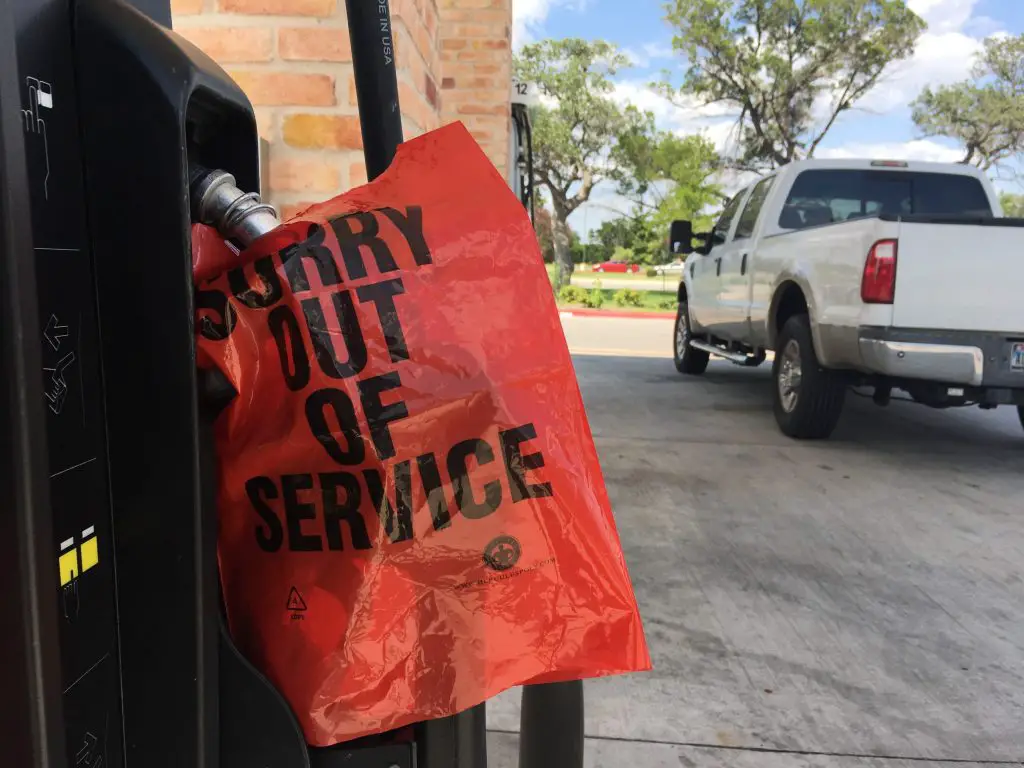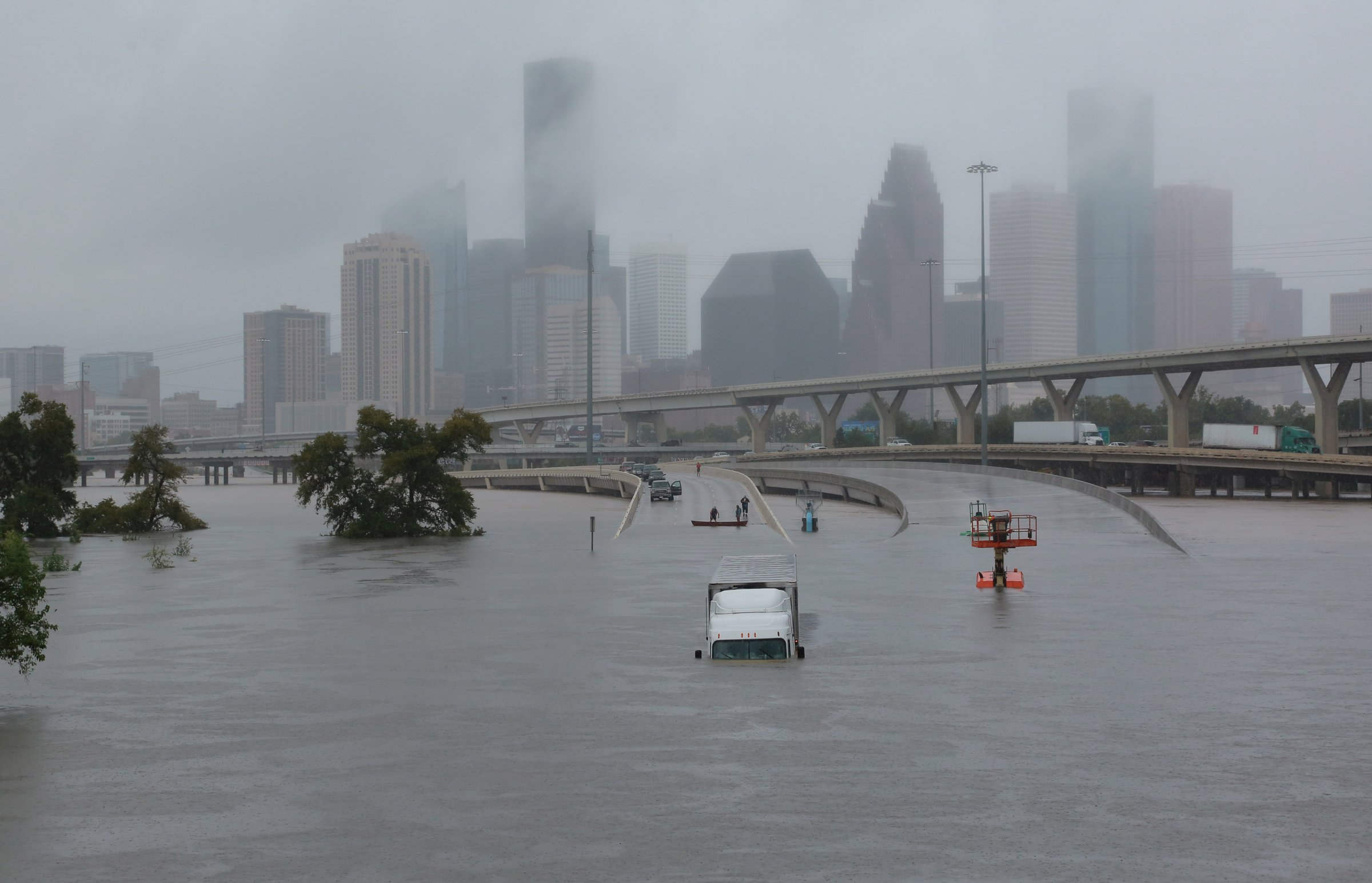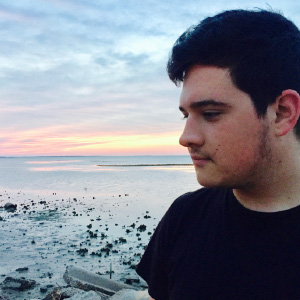I watched the storm come in from the second floor of my balcony. I had nothing else to do, having tried to buy supplies from the gutted grocery stores whose lines stretched past the cashiers and into the aisles. Local weather reporters were sure that San Antonio was going to drown, and the city had little time to prepare for the incoming downpour.
In reality, there was decent rain for three days and a handful of power surges, then everything went on as usual. That is, until the city-wide “gas shortage” hit, leading me to search out stocked gas stations at four in the morning. While I tried to avoid looking at my blinking gas light and the huge “E” on my dashboard, I started thinking about how Hurricane Harvey had impacted Texas: It was more than just physical; the storm had changed the consciousness of the state.

The Coastal Bend area of Texas was destroyed. While Houston took the storm’s rainfall, small coastal towns such as Rockport and Port Lavaca took Harvey’s hurricane-force winds. Even before the rain stopped, Houstonians got to work. Boats and lifted trucks took to the streets-turned-rivers and pulled families from water-logged homes. Animal rescue groups gathered stray dogs, cats, chickens and bunnies and outsourced them to shelters in neighboring cities.
When the floodwaters started receding, convoys filled with goods came in, all supplied from donation drives across the United States. Social media was filled with photos of these events, followed by an outpouring of love for Texas. People helped one another regardless of race, religion, party, whatever. Houston became the microcosm of an American value: acceptance. It was refreshing to see camaraderie in this country again. But with this support came questions.
Hurricane Harvey became massive in a short amount of time and caused catastrophic amounts of damage. Though there were initial comments on improving the infrastructure of the cities affected, policymakers soon began raising larger issues surrounding the climate changes that had spurred the violent weather in the first place.
These concerns grew just as fast as another hurricane, Irma, began developing off the western coast of Africa, becoming the largest hurricane ever recorded in the Atlantic Ocean at 185 m.p.h. wind speeds. Once Irma made landfall, it drowned several Caribbean islands, as well as Cuba and Key West, and mainland Florida received extensive damage. Even before Irma roared through the Caribbean, yet another hurricane, Jose, had formed.
The mood changed. Something seemed off. Why are these huge storms developing so quickly, and why all at once? And why, at the same time but on the other side of the country, were so many wildfires burning through the western half of the United States, with firefighters unable to contain them? And the earthquake off the Pacific coast of Mexico that reverberated through Mexico City, killing more than sixty people? What is happening? Instead, concern regarding the planet’s erratic weather seems, finally, to be a bipartisan issue, as policymakers on both sides of the aisle have begun raising the issue of climate change. Took you all long enough.
Weather is the tangible effects of climate, and the events of the last few weeks would be hard to define as anything else but abnormal. These storms have successfully translated the urgency climate scientists and activists have felt for the past few decades. I don’t like how hysterical San Antonio became, or how many of its citizens felt just as personally impacted by Hurricane Harvey as the Texans who survived it. Losing gas and losing a family member are two different things. But, the sensationalizing of Hurricane Harvey, Irma and Jose caused this change in American consciousness regarding climate change. Maybe not for good, but the attention at least starts the conversation. The skeptics are still there, but they’ve been met with overwhelming resistance. This isn’t about ideology anymore. People are dying.
As with many natural disasters, I expected Hurricane Harvey’s impact to blow over the news cycle just as quickly as the storm did over San Antonio. But this is not the beginning of the end, as several people on social media, understandably, believed. Rather, it is the beginning of non-partisan climate change solutions. If there is anything positive that’s come from this mess of extreme weather, it’s the issue’s longevity in the public’s eye. Americans now have an opportunity to advocate climate change, using the recent hurricanes as evidence.
Twenty miles later, I found a gas station. There were no bags on the pumps, so I pulled in. As I filled up, more cars drove into the other pumps. There was no jubilation or relief in their faces. Everyone was silent. But I could see concern in their stares, but not at whether they’ll have to endure this “shortage” any longer.
I think it was the uncertainty I had seen on posts across social media platforms. These people filled up and went on their way without a complaint or fight. They adapted to a situation they were not comfortable facing. Watching Earth change in catastrophic ways is uncomfortable to watch, but Americans must adapt calmly, while not getting too comfortable. Just enough to keep a level head when we collectively solve this issue.

















